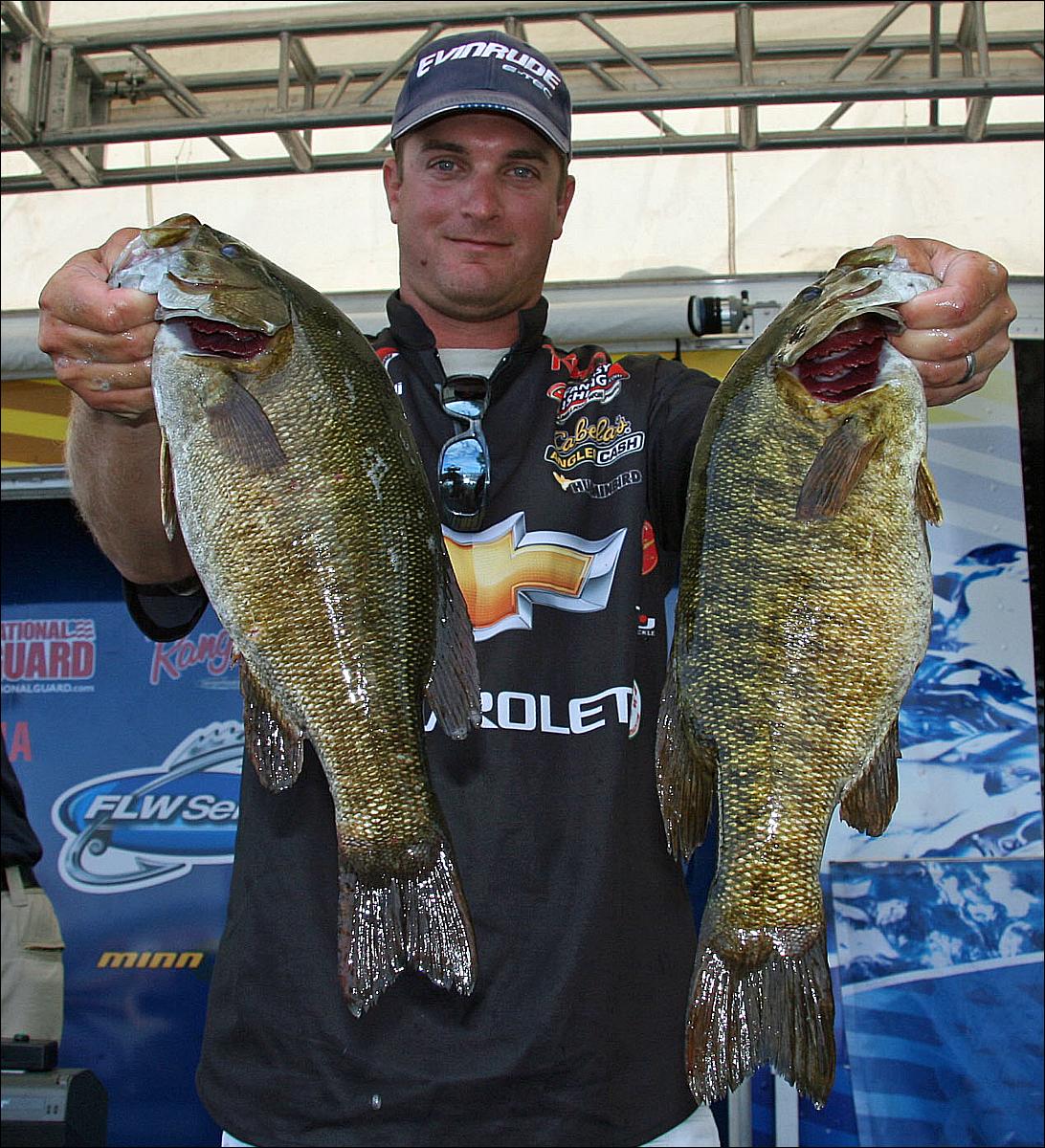



After his win last month in the 2014 Forrest Wood
Cup, FLW Tour pro Anthony Gagliardi, a Team Rainshadow pro staff, shared some pro tips for fishing schooling
bass.
Here is what he had to say:
The first tip that I have for fall fishing in
general, is to make sure to pay attention and always be observant. I keep my
eyes to the backs of pockets or coves. That
is where the feeding activity will be. If I see one or two shad pop up out of
the water, it is a pretty good indicator that there are bass feeding on 'em and
I know I should be fishing there.
MOVING BACK
Fisheries can vary around the country but most lakes
have some type of shad population. As the temperatures cool from summer into
fall, the shad will start migrating to the backs of creeks and the bass will
follow them back, shortly thereafter. During the this time, the bite can get
tough, because there are so many schooling shad to compete with a lure.
In the fall, the shad are typically kind of small.
In order to trigger strikes, I balance out the lure size to the actual bait
size. It can be hard to closely replicate the smaller size and get the bass to
readily bite, but if I can get a lure sized accordingly, most of the time, I
can get a fish to bite.
LURE SELECTION
When I am picking a bait to imitate these small
schooling shad, key factors are bait size, water clarity and conditions.
My top three choices for fishing schooling bass are
a small topwater bait like a popper, a small prop-style bait and a small
swimbait. It is getting to the point when I always have some type of swimbait
rigged up and ready for all times of the year, but for fall in particular. There
are going to be times when the bass are not going to want to come up and hit a
topwater lure, so that is when that swimbait becomes very effective.
The feeding activity can tell me if a topwater lure or
a sub surface bait will be more effective. If the bass are coming up and
breaking the surface to eat, then I'm going to fish a topwater bait; but if I'm
seeing boils and they fish are not busting the surface, then the they are just
feeding a foot or two under and a topwater isn't going to be as effective.
POPPER
I will use a popper for calmer, slicker, clearer
water conditions.
When I fish a popper around breaking fish, I am not
going to use much of a pause on the retrieve. I would pause if I was fishing
around cover, but not in this schooling fish situation. When I throw a popper
up next to stump, I know that's where the fish should be and I can pause to
trigger a strike. With schooling fish, I don't really know where they are or
where they're are chasing, so I just want to keep the bait moving to attract
the fish.
I am trying to get their attention away from the
live shad. I want the lure that I am fishing to be distinguished from the live bait, but at the
same time, it has to be realistic enough to get the fish to bite.
I want to get my lure within a foot or two of the feeding fish. Most of the
time, the fish are going to bite at the first short movements, regardless of the
speed of my retrieve. If they don't bite right away, I will work it back in
with a "faster is better" retrieve. That being said, faster retrieves
are less effective as the fall changes into winter and the water becomes even
more cooler. I start to slow down as the water temps get down into the 50's.
Downsizing to light line can be a key factor when I am
fishing a lure among all the live bait, so I use Gamma 6 lb monofilament for a small
popper. I throw this on a 6'8" or 7' medium action rod. I like a longer rod
that can get the bait out there, but not so stiff that it will pull the bait
away. I also want my rod to have some tip on it to handle the lighter line.
Sometimes, if the fish are really aggressive or
feeding on bigger bait. I will throw a bigger topwater lure.
PROP BAIT
A prop bait really shines in windier conditions, so
if the water has a little ripple to it or a little color, that is what I will
use. The retrieve on the prop bait is more of short, crisp twitch of the wrist.
I will also work it with a side-to-side,
walkin' the dog action, similar to a walking bait, but with more commotion and
splash, because of the prop.
I fish a prop bait on a 6'8" or 7' medium to
medium-heavy casting rod with 12 lb monofilament.
SWIMBAIT
I will always try a swimbait, even if I was catching
'em on a topwater lure, because a swimbait might get a bigger fish to bite,
since it can get a little deeper. Regardless of the conditions, when I am
fishing schooling bass, I am always going to tie one on at some point and give
it a try.
I don't get too fancy when I'm throwin' a swimbait.
It is pretty much a cast and wind retrieve. Sometimes when I'm reelin' it in, I
will kill it, give it a little bit of slack line and let it fall a foot or two.
There are times that can trigger a bite; but most of the time, I just throw it
out there, wind it back and then start to figure out if they want it fast or
slow. A slower retrieve will allow it to be down a bit deeper and a faster
retrieve will get it up there closer to the surface.
Depending on the size of the shad, I am going to
throw a 3 to 5 inch shad colored (whites, silvers, grays) swimbait with a 1/4
oz head. I use 12 to 16 lb fluorocarbon. The line size will be determined by
the water clarity and bait size. The smaller the bait and the clearer the
water, the smaller the line. If the fish are more aggressive or the water is little
bit stained or windy or if I was using a larger swimbait, I would go to a
little heavier line. I throw this on a 7'2 medium-heavy casting rod.
Gagliardi is currently developing a signature series
rod line with Batson Enterprises using Rainshadow rod blanks.
More information to come.
Photos courtesy of FLW Outdoors and Anthony
Gagliardi


 Advertising
Advertising